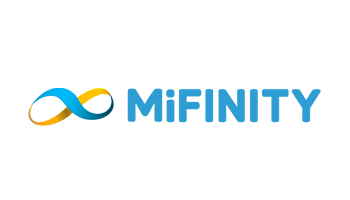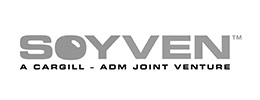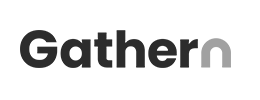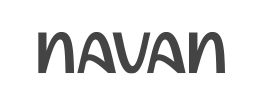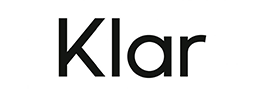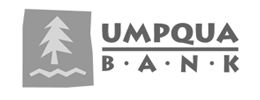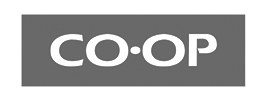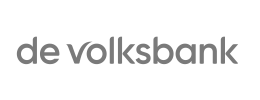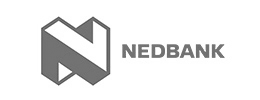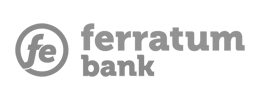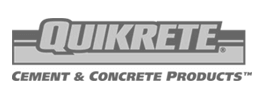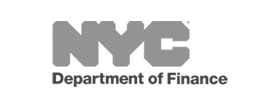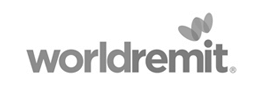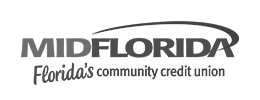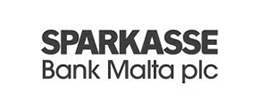Account reconciliation for insurance boosts efficiency with ReconArt
Financial reconciliation for insurance businesses: navigating complexity with precision
Insurance is a multimillion-dollar industry, serving as a critical mechanism for risk mitigation. From health and life insurance to property and casualty coverage, insurers play a vital role in safeguarding individuals and businesses against unexpected losses. However, the operational burdens and heavy back-office workloads associated with insurance claim management and financial reconciliation for insurance are significant challenges that necessitate meticulous processes and innovative solutions.
The dual reconciliation processes: financial vs. actuarial
In the insurance sector, reconciliation can be broadly categorized into financial and actuarial reconciliations. Actuarial reconciliation focuses on verifying the accuracy and validity of insurance claims against policy terms and coverage. Actuaries assess underwriting decisions against policy guidelines and risk assessments. This type of reconciliation is critical for evaluating the insurer’s financial stability and ensuring that sufficient reserves are maintained to cover liabilities i.e. future claims.
On the other hand, financial reconciliation is a day-to-day tracking that financial transactions are accurately recorded and matched with corresponding accounts. The most typical use cases that come to mind:
- reconciling premiums collected from policyholders with amounts recorded in the accounting system
- and verifying claims payments against policy provisions.
The primary goal is to ensure financial records are complete and accurate, which is essential for maintaining the company’s financial health and compliance with regulatory standards.
The insurance claim management process
Insurance claims management is an intricate process involving various stages from the initial report to the final disbursement. This complexity stems from the need to gather and compare data from multiple sources to affirm claim legitimacy and accuracy in payout amounts.
Throughout these stages, insurers must prevent fraud (due to false claims or exaggerations, for example), comply with regulations, and manage substantial data flows, all of which contribute to the complexity of the reconciliation process.
Increasingly, claim management automation needs are addressed with AI & ML technologies, which can process large volumes of data, identify patterns, and reduce manual workloads, thereby increasing accuracy and efficiency. For instance:
- Fraud Detection and Prevention: AI can spot anomalies indicative of fraudulent claims, helping to mitigate losses.
- Data Integration and Transformation: Automated tools can integrate data from multiple sources, clean and enrich it, and ensure it is in optimal shape for reconciliation.
- Complex Matching: AI-powered systems are poised to manage complex matching scenarios, such as 3-way matches and many-to-many relationships, which are common in insurance reconciliations.
Process specifics in reconciliation for insurance
The reconciliation process in insurance is intricate, involving multiple steps and comparisons of data from various sources. This complexity often results in delays, inaccuracies, and costly errors, leading to significant revenue leaks estimated at millions annually. Insurers frequently outsource financial reconciliations in a bid to improve efficiency.
Bank reconciliation seems to be the most common process in insurance. However, policy sales allow for various payment methods, especially for the retail segment (credit cards, cash, etc.). They inevitably multiply sources and formats of data that enters the recon system. Hence, System integrations are especially important.
Types of reconciliation for insurance
Premiums
This is one of the key reconciliation processes for insurance businesses. Premiums collected from policyholders must match the receivables recorded in the core sales platform. The second step identifies the corresponding proceeds in the bank account. Reconcilers track the deadlines for the periodic installments and the outstanding balances according to the individual payment plan.
Claims
An essential step of the claim management process is the reconciliation of claim payments. Upon confirming the damages suffered, the claims payment must align with the policy provisions across several key attributes:
- period validity,
- coverage,
- premium amounts,
- policyholder id,
- beneficiary id,
- timely payouts / disbursements, etc.
A diligent check and verification of these conditions makes sure that contractual obligations are fulfilled.
Commissions and brokerage fees
Reconciliation helps insurance companies track and verify commission payments to agents and brokers. The objective here is to calculate and record commission expenses accurately and follow up on disbursements in accordance with contractual agreements for intermediaries’ compensation. On the hand, brokers also need to submit reports and make their deposits to insurance carriers for the policies sold and premium payment collected.
Reserves and liabilities
Insurance companies invest policyholder funds. Positions and holdings reconciliations are crucial effort for the prudent management of those substantial investments. Regulatory bodies impose requirements for managing assets and liabilities in a way that safeguards the stability of the insurance industry.
Reconciling reserves and liabilities regularly gauges the indicators of financial health and solvency. This involves continuous balancing of expected future claim payments with available reserves. As a result, dynamic adjustments of the reserves levels addresses the fluctuations in the risk profiles.
Re-insurance
Reconciliation plays its role managing reinsurance agreements, too. Reinsurance represents redistribution of the risk burden, which materializes in transfers of funds and obligations. Insurers must reconcile ceded premiums and recoveries with reinsurers and reconcile assumed premiums and losses to ensure accurate financial reporting and risk management.
Regulatory compliance
Reconciliation is an essential element of the regulatory reporting that maintains transparency and accountability. Robust financial reporting practices protects the stakeholders’ interests in the event of insolvency.
IFRS 17 applies to insurance contracts, unifies standards of insurance accounting, and facilitates comparisons across products, geographies and jurisdictions. The standard regulates rules applied for revenue recognition, consolidation of subsidiaries in multinational companies, timing of cash flows, profit reporting, methods for valuation of obligations. Converging these accounting practices allows a more accurate evaluation of insurers’ performance in comparative and historical perspective.
FCA’s CASS 5 impose regulations concerning client money arrangements for general insurance intermediaries. The regulations enforce best practices regarding client record and bookkeeping policies, client money segregation, collecting compliance evidence and reporting. The definition of client money in insurance regulations include premiums, refunds and claims payments subject to transfer through the intermediary, between the insurer and the insured.
Characteristics and challenges of the account reconciliation for insurance
- Transaction volumes: Typically, insurance businesses deal with huge volumes of transaction data. Besides the magnitude of the industry, premium payments or claim settlements both can come in separate installment, thus increasing the related financial data to be reconciled. Moreover, the complexity and diversity of the insurance product list add layers of difficulty for their reconciliation teams.
- The imperative for high precision: Financial data relationships in insurance offers intricacies such as complicated decomposing of bulk amounts or keeping tabs on outstanding balances of individual payment plans. Inaccuracies, unattended discrepancies and delays in insurance reconciliations can lead to revenue leakage, affecting the financial health of the insurer, as well as regulatory breaches with material impact on the organization’s credibility.
- A variety of matching scenarios. Insurance organizations interact with both corporate and individual clients, which requires differentiated approach, functional and organizational separations, structuring different process flows, and occasionally team specialization.
- Multiple sources and data formats: Omnichannel sales expand the reach of insurance products and value-added services. However, the partner exchange of data files lacks standardization or homogeneity. Additionally, a combination of credit card and bank statements, EFTs and cash transactions need to be reconciled but only after conversion, unification, and transformation of data. System integrations are crucial for managing these diverse data sources swiftly and efficiently.
- Variety of exceptions: The reconciliations for insurance companies is characterized by an extensive inventory of exception. Some of them are common for the general reconciliation process – like timing delays. Others are strictly typical in insurance reconciliations and business specific logic – e.g. claim status labels. Notably, tracking and verifying commission payments to intermediaries makes a substantial share of the legitimate exceptions mix.
- Sophisticated reporting needs: Insurers must submit reporting data to regulatory bodies. The reconciliation system stores and produces a large portion of the reporting output required.
Automation software and reconciliation for insurance
ReconArt automates every reconciliation process in financial area, including the most common ones for insurance businesses – bank, credit card, payables and receivables, intercompany, etc. The solution centralizes high-volume transaction matching, account reconciliation and period-end financial close workflows in one unified and secure SaaS environment.
Import automation and integration capabilities
Bringing data onboard, far ahead of the actual matching and analysis, has always been challenging and troublesome. ReconArt acknowledges the efficiency enhancement of fully automated file import and data extraction. The solution supports import templates for many of the standard industry formats out-of-the-box, plus a capability to map any machine-readable file type. AI assisted import template configurator makes it easier for ReconArt users to incorporate new sources of third-party data independently.
ReconArt is integration ready to automate data inflows and outflow to and from the reconciliation tool originating from both internal and external systems. This is a critical capability for insurance clients, which manage data inflows and outflows from multiple systems and counterparties on a daily basis. In addition to the file-based integration and available API connectors, ReconArt offers an integration layer called Recon Data Factory, which serves as:
- A bridge between the API connectors of two business software systems
- A user interface that provides a streamlined workflow for automated data delivery and verifications
Data transformation and enrichment
ReconArt provides data transformation and enrichment capabilities performed at import and triggered by user-defined rules. The solution extracts and cleans data from multiple sources automatically, which improves match results and eliminates laborious and error-prone data entry.
The ETL capability of the solution allow a total control over the columns eligible for alignment. User can take a step further and apply functions for automated manipulation of the relevant fields, based on their role in matching – cut, add, concatenate, split, and many, many more. This preparatory step makes a huge difference in terms of saving time for manual data processing and focused approach on data comparison.
Data matching
Comparing data sets on a large scale, with complex logic and high frequency is undoubtedly the ReconArt superpower. Our users report leaps in productivity and efficiency after the implementation of ReconArt for high-volume transaction matching. In contrast to manual matching in Excel, a comprehensive reconciliation solution like ReconArt:
- Is flexible and versatile to onboard any type of existing reconciliation process
- Schedules the matching operations with the desired frequency and degree of automation, including totally hands-free
- Applies a combination of user-defined match rules with an auditable, consistent logic
- Supports 3-way matches, 1-to-M and M-to-M relationships
- Captures a granular audit trail and end-to-end transaction history
- Eliminates the human factor for errors and omissions for reliable results, much faster
- Has a proven capacity to process millions of records monthly
Exceptions management
The rich variety of outstanding items requires a flexible exception management functionality that would allow a straightforward classification in preset and configurable categories alike. ReconArt automatically updates the status of the unmatched items, follows rules for their categorization and filtering, monitors their ageing patterns, and pushes them through applicable Journal creation and approval workflows.
The importance of the automated exception management phase of the reconciliations become apparent when scores of outstanding items are flagged and grouped in cases, ready for investigation. Thus, the reconciliation team maintains good coordination, control, and visibility on assigned responsibilities to streamline and accelerate the resolution.
Export and reporting features
ReconArt helps reconciliation professionals in insurance fulfill their reporting obligations with ease and confidence. ReconArt users can feed downstream systems with scheduled or adhoc exports of account reconciliation data (in CSV or XLS formats for compliance), statutory reporting, and analytics purposes.
Users can access the entire database and select which side of the data, matched or outstanding transactions, from one or multiple matching accounts, period, columns, etc. Filtering, sorting, calculation and aggregation features help produce the required reporting output in minutes and without manual processing.
***
Leveraging automated tools like ReconArt can significantly enhance the accuracy and efficiency of these processes. Adopting advanced reconciliation technology augmented with AI / ML capabilities will be vital in navigating the reconciliation complexities and ensuring better service to policyholders.

 follow our blog
follow our blog